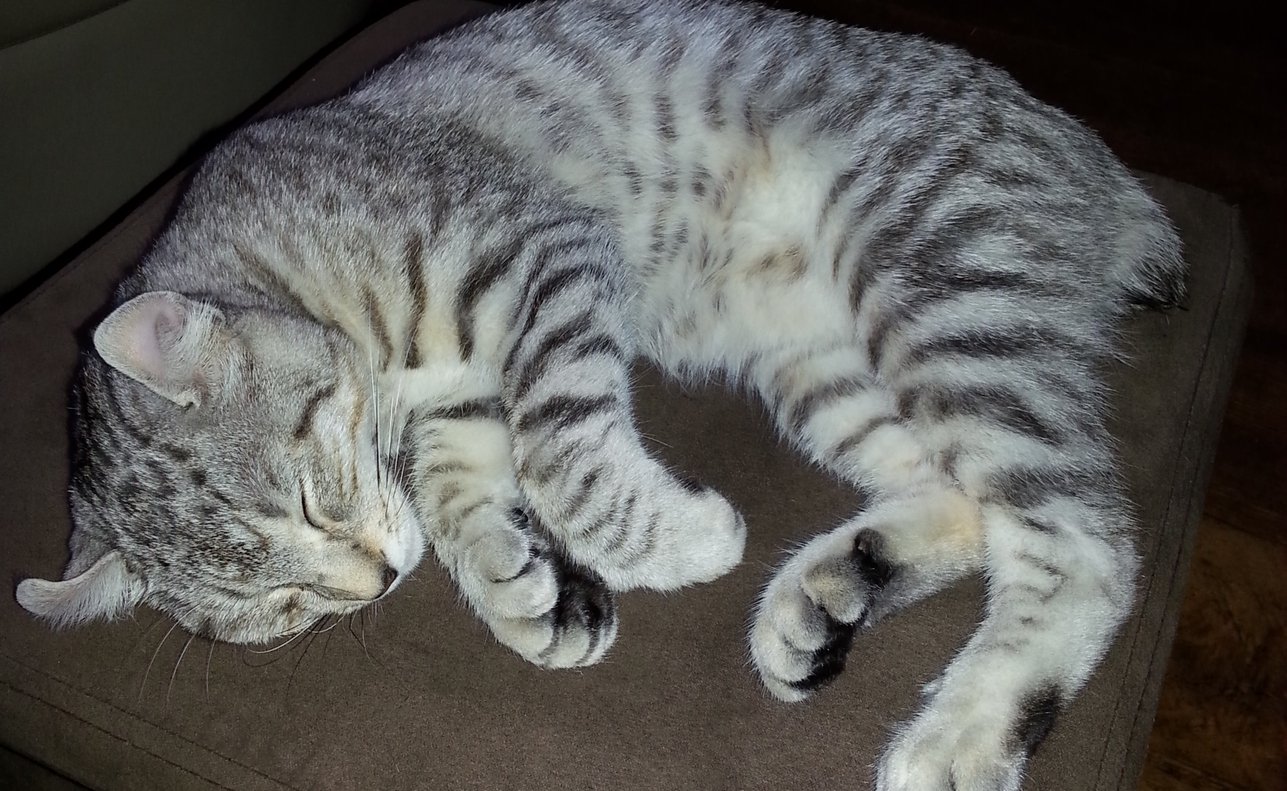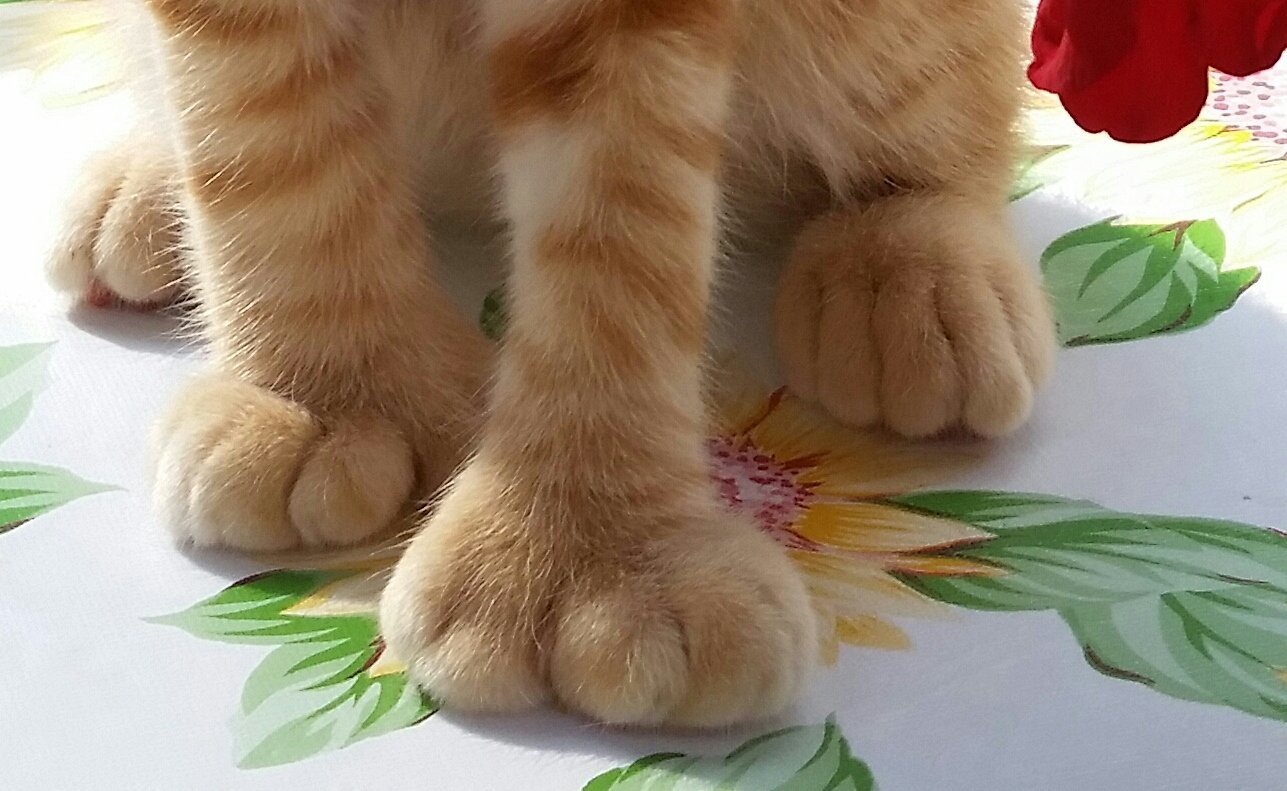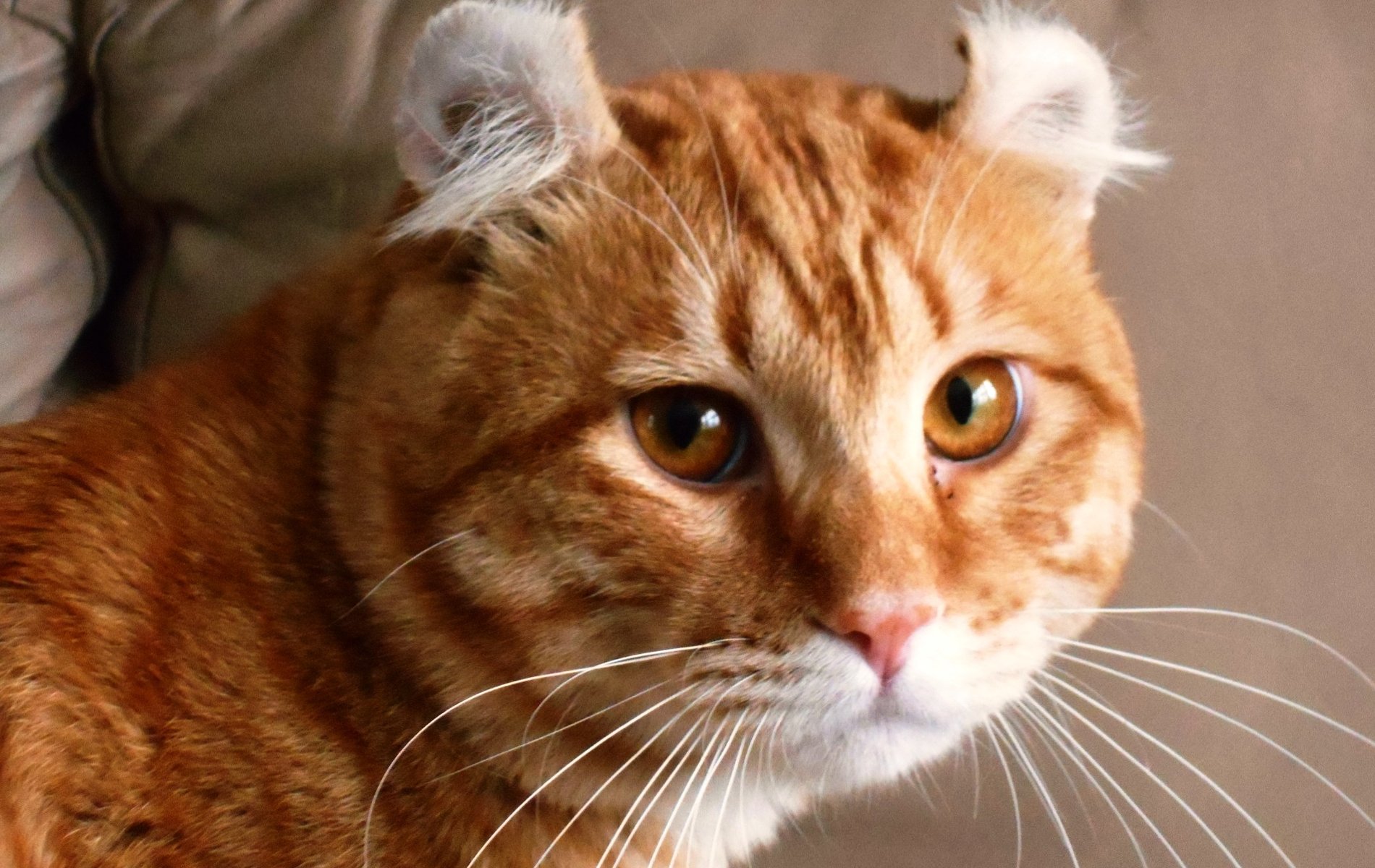Highland Lynx Breed FAQs & Cat Care
Ears, Tails and Paws
Every RockStar kitten is different, but here is what you could get.
The very first Highland Lynx litter was born on July 1, 1995 at Timberline Cattery in N.C. The Highland Lynx is the only cat breed specifically developed from two existing breeds. The Timberline Cattery pioneered the development of the Highland Lynx by crossing Desert Lynx cats with the Jungle Curl cats.
The polydactyl gene (which produces extra toes) is a dominant gene which is considered a desirable trait in these cats. They have the same life expectancy as any domestic cat. Many people say they are more doglike in their personalities and highly intelligent. Many people have easily taught their cats to fetch, walk on a leash and more. They get along very well with other cats and household pets. They require the same inoculations and veterinarian care as any domestic cat. They are often larger weighing between 13 and 23 lbs. Highland Lynx reach full maturity at 3 years of age unlike a domestic cat which is 1 year.

Bobtails
Our cats can have Long Tail (LT), Hock or Rumpy; Natural Short Tail (NST) and each cat in the litter can be different.

Polydactyl Feet
Polydactyl (Poly) cats may have as many as seven digits on front and/or hind paws, and various combinations of anywhere from four to seven are common.

Curled Ears
The curled ears (CE) is a dominant gene so litters will often contain a mix of curl-eared and straight eared kittens.
Cat Care
How to care for your RockStar kitten.
Ear Care
Highland Lynx ears are always curled. The curled ears are caused by a dominant gene that curls their ears and somewhat narrows the ear canal that requires regular cleaning of brown ear wax. Every cat is different and if you look in their ears you will see what needs to be gently cleaned. In general, cats that shake their heads may be a sign that their ears need to be cleaned. It is good practice to check their ears on a weekly basis and clean if necessary.
RockStar Cattery recommends the use of MalAcetic ULTRA Otic cleanser. The majority of our cats are able to clean their ears on their own and do not need to be treated with a cleanser. For those that do need help in maintain good ear heath we have found that MalAcetic ULTRA Otic cleanser has been instrumental in preventing ear infections and fluid buildup. A couple of drops on a cotton pad and squeezed into the ear is all it takes. MalAcetic ULTRA Otic cleanser is available on Ebay, Amazon, Chewy.com and other suppliers.
Nail Care
Kittens should have their nails trimmed on a regular basis. The pink part of a cats nail is called the quick and is where the nerves and blood vessels are. Do NOT cut this sensitive area. Snip only the white part of the cats nails. It’s better to be cautious and cut less of the nail rather than risk cutting into the quick. If you do accidentally cut the quick, any bleeding can be stopped with a styptic powder or stick. By clipping your cats nails when they are young and often in a calm atmosphere, they will get used to it. Here at RockStar Cattery we can help you with any questions you may have with your cat’s nail care.
Diet
Your new kitten should be eating a good quality canned grain free diet specifically formulated for kittens until one year old. Cats are the ultimate carnivore, a meat eater by nature. They crave a diet rich in meat, poultry or fish protein. Providing a well-balanced grain free wet food diet and plenty of water is key to providing proper nutrition to proper growth and keeping cats of all ages healthy. Kittens have very small teeth and can’t chew dry food very well so grain free kibble should be limited to treats and behavioral training. At age one you can switch your kitten to an adult grain free canned cat food. At RockStar Cattery we feed our cats a raw diet. If you want any information about raw diets or have any further questions regarding your kitten’s diet, please feel free to contact us.
Cat Fun Facts
- Cats can run up to 30 mph.
- Cats do not have the ability to taste sweets.
- Cats sleep about 15 hours per day to conserve energy to hunt.
- Cats are color blind. Red and green are the two most difficult colors for them.
- Cats shed their whiskers several times in their life time.
- Cats whiskers are used for judging distance, space and to sense object’s in the dark.
- Cats do dream.
- Cats have been domesticated for over 4,000 years with some estimates of over 12,000 years.
- Almost all orange cats are male and it is rare to see and orange female. It has also been my experience that most orange cats are overly friendly and loving.
- An indoor cat can live up to 15 years and commonly reach 18 to 20 years. Outdoor cats have an average life span of 6 years SO KEEP THE CRITTERS INSIDE!! PLEASE!


